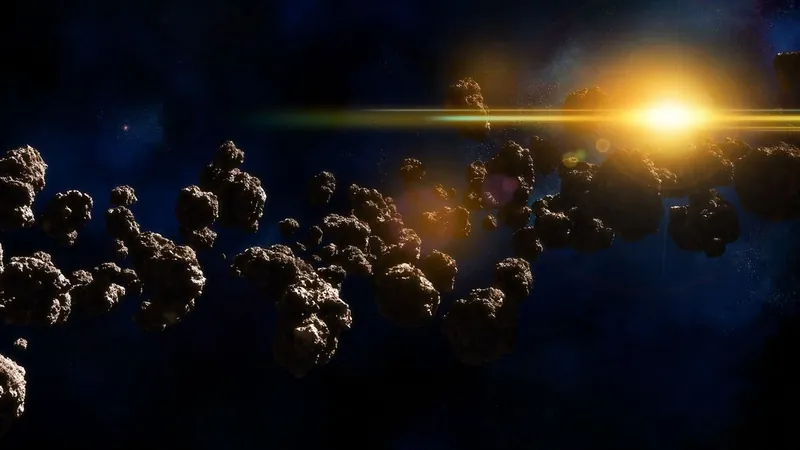
Meet the Revolutionary Cat-like Robot: The Future of Space Exploration and Asteroid Mining!
2025-01-04
Author: Arjun
A groundbreaking robot, resembling a cat in its agility and movement, is set to change the face of space exploration and asteroid mining! This state-of-the-art exploration robot is being designed to traverses the rugged terrain of asteroids, which pose unique challenges for conventional moving machines.
Powered by advanced artificial intelligence (AI) and a specialized movement program rooted in reinforcement learning, this robotic marvel can adapt its gait to the varying and extreme conditions it would encounter in space. This flexibility is critical in low-gravity environments where traditional quadruped robots would falter, making this 'robot dog' an invaluable asset for exploratory missions.
Imagine the chaos of navigating an asteroid's surface where even the slightest mistake could be catastrophic. One wrong step could send the robot spiraling into the abyss of space! But there’s a twist—thanks to its ingenious design, when this robot leaps, it can hover temporarily in low-gravity, allowing it to float gracefully through the vacuum of space for several seconds, reported the South China Morning Post (SCMP).
The challenge, however, for traditional robots is stabilizing themselves during such maneuvers. Just minor shifts in their legs could send them off-course, similar to a spinning top. To overcome this, scientists at the prestigious Harbin Institute of Technology have innovatively employed iterative AI training. Their system enables the robot to use its four legs cooperatively, providing exceptional control over its orientation during jumps and ensuring a soft landing every time.
This pioneering robot could very well become the first of its kind capable of traversing and mapping asteroid surfaces in our solar system. Though we've successfully deployed static probes like NASA’s NEAR Shoemaker since 2001—capturing images and gathering vital sensor data—these devices are immobile once they land, stuck in one spot as they observe their surroundings.
In contrast, this agile, cat-inspired creation would provide unprecedented maneuverability across asteroid surfaces, amplifying our understanding of these celestial bodies. Not only that, but its remarkable energy efficiency means it could operate for hours without the need for frequent recharges, making it ideally suited for long-duration space missions where power management is critical.
As we stand on the brink of a new era in space exploration, the introduction of this remarkable robot signals a potential shift in how we interact with asteroids and further uncovers the mysteries of our solar system!
 Brasil (PT)
Brasil (PT)
 Canada (EN)
Canada (EN)
 Chile (ES)
Chile (ES)
 Česko (CS)
Česko (CS)
 대한민국 (KO)
대한민국 (KO)
 España (ES)
España (ES)
 France (FR)
France (FR)
 Hong Kong (EN)
Hong Kong (EN)
 Italia (IT)
Italia (IT)
 日本 (JA)
日本 (JA)
 Magyarország (HU)
Magyarország (HU)
 Norge (NO)
Norge (NO)
 Polska (PL)
Polska (PL)
 Schweiz (DE)
Schweiz (DE)
 Singapore (EN)
Singapore (EN)
 Sverige (SV)
Sverige (SV)
 Suomi (FI)
Suomi (FI)
 Türkiye (TR)
Türkiye (TR)
 الإمارات العربية المتحدة (AR)
الإمارات العربية المتحدة (AR)